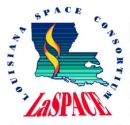



Payload 03 Information
Payload Flight Number:
Institution:
Payload Title:
High Altitude X-Ray Detector Testbed
Student Leader:
Faculty Advisor:
Payload class:
SMALL
Payload ID Number:
03
Mass:
2.03 kg
Current:
0.42A
Serial Downlink:
Yes, Not Specified
Analog Downlink:
No
Serial Commands:
No
Discrete Commands:
No
Payload Specification & Integration Plan
Due: 06/22/2012
Delivered:
Payload Integration Certification
Scheduled: 08/03/2012
Actual:
Flight Operation Plan
Due: 07/30/2012
Delivered:
Final Flight / Science Report
Due: 12/14/2012
Delivered:
Abstract:
The engineering objective of the proposed experiment is to test and validate the performance of a compact x-ray detector and its associated communication and data-handling (C&DH) computer. The main science objective of the experiment is to characterize the background x-ray noise at the HASP flight altitudes. Payload construction and testing will be performed by Mr. Patrick Doyle as part of his Masters of Science thesis work. Undergraduate students will be recruited to volunteer on the project. The project has one principal investigator, Dr. Demoz Gebre-Egziabher, and one other faculty advisor, Dr. James Flaten. There are also two industry sponsors, Dr. Keith Gendreau from the Astrophysics Science Division at NASA – Goddard, and Dr. Suneel Sheikh, CEO and Chief Research Scientist at ASTER Labs, Inc. Current interface requirements include less than 15 watts of power and less than 1200 baud of downlink bandwidth. There will be minor modifications to the payload mounting plate in order to affix the payload to the plate. The payload will be designed to conform to CubeSat infrastructure standards. All data collected will be stored onboard. |